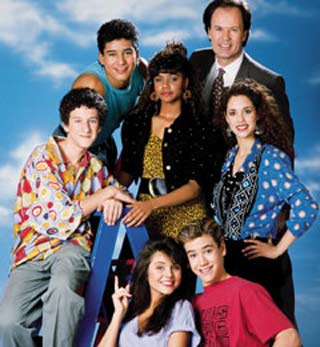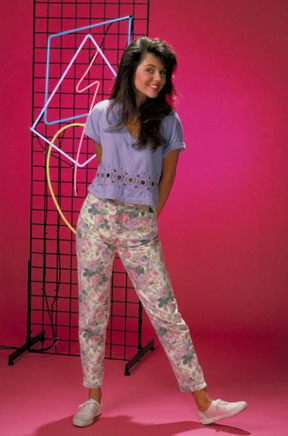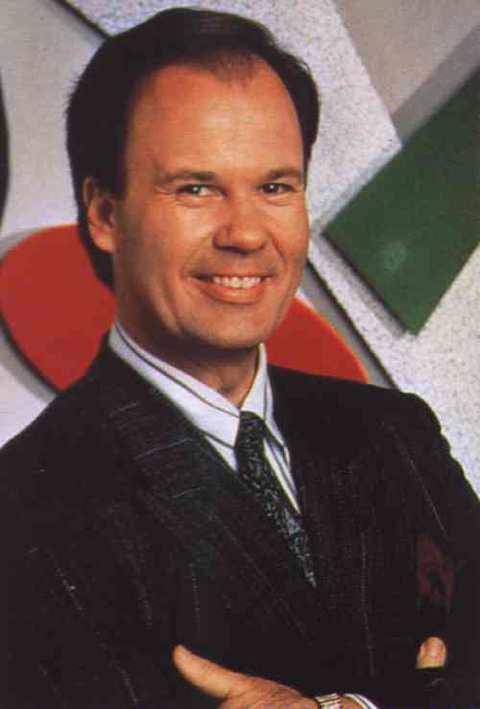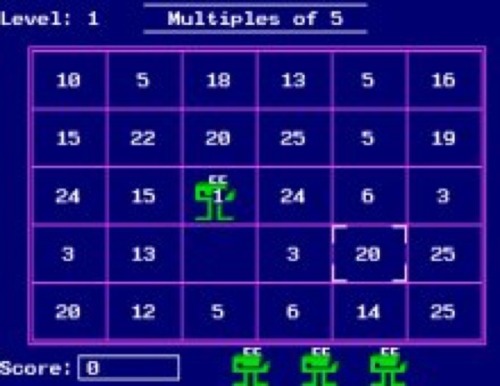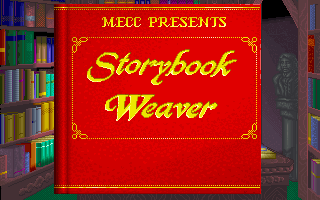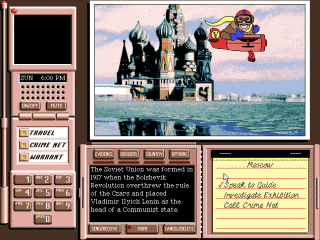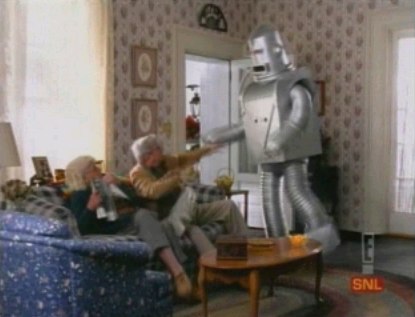
The 90s may not have been the golden age of Saturday Night Live but it was certainly a consistently funny time for the show, featuring a versatile and talented cast willing to do almost anything for a laugh. True to SNL tradition, the era featured an abundance of parody commercials, spoofs featuring the cast actors that closely resembled and not-so-subtly mocked real television ad spots. So many of these fake commercials were so spot-on that they became indistinguishable from actual commercials. Save for the content matter, that is. I highly doubt "Oops I Crapped My Pants" would sell well on real store shelves, but SNL does an impressive job of making it seem almost plausible.
There were countless fake commercials throughout the years, but the 90s gave us many of our most memorable. If nothing else, this trip down SNL memory line is enough to make you miss Phil Hartman's unique skill at incredibly effective deadpan. Here are just a few of the satirical gems that entertained us between sketches:
Old Glory Insurance
Robot Attack Insurance
Chris | MySpace Video
In a time when many celebrities (Alex Trebek, Wilford Brimley) were out there hawking insurance, it was tough not to poke fun at the incredibly somber and humorless tone of their paid spokesperson delivery. This Old Glory bit definitely did the trick, spotlighting the dead-on deadpan intonation of Law & Order's Sam Waterston. He really had me going for awhile. I was almost certain this was a real ad, until they brought on the robots. Waterston, completely straight-faced, announced that killer robots were among the leading causes of death among the elderly. Without his pitch-perfect delivery, this could have been a dud, but Waterston definitely brought it. I was practically at my phone frantically dialing Old Glory for robot protection, and I was only ten. The robots weren't even after me yet.
First Citywide Change Bank
The voice-over confidently proclaims, "When you only do one thing, you do it better." It seems almost like a legitimate tagline for a bank. That one thing, however, was making change. As in changing monetary denominations. The proud and suave bank manager (Jim Downey) asserts, "We have been in this business a long time. With our experience, we're gonna have ideas for change combinations that probably haven't occurred to you. If you have a fifty-dollar bill, we can give you fifty singles. We can give you forty-nine singles and ten dimes. We can give you twenty-five twos. Come talk to us." And so it went, with helpful examples endless recombinations of change. Every aspect from the camera angles to the lighting to the booming voice-over was so similar to the real thing, you'd almost wish they would give you twenty singles, two tens, one five, eight quarters, forty nickels, and a hundred pennies. Wait, is that fifty? You shouldn't count on my skills, I couldn't even get through 8th grade Number Munchers the other day.
Bug-Off
In a time when some pest control agencies were focusing on humane treatment, Bug-Off would definitely have stood out in its approach. As an alternative to the paralyzing poison used by its real-life competitors, Bug-Off tears off the roaches legs, scorches its reproductive organs, beats it to unconsciousness with its own limbs, stuffs cotton in every opening, and torments it with out-of-reach morsels of food. All through a clear viewing window to boot! Now that's a show. It admits that it won't kill the roach, but it will "give him plenty to think about". After all, isn't that what we want from our roach-killers? A thought-provoking experience for our victims. Sold.
Crystal Gravy
During the ongoing cola wars, Pepsi released Crystal Pepsi, a ridiculous attempt to fool people into thinking that clear beverages were purer and less tainted. Never mind that the new product had pretty much the exact same makeup as the original, save for the dark syrupy color. Using the same "Right Now" background music as the original, SNL gave us Crystal Gravy. I know, I know. Ew. It did effectively showcase the stupidity of Crystal Pepsi's premise. Still, though. Gross.
The Love Toilet
Some of these ads weren't necessarily based on real-life products, but were just ridiculous tangential ideas likely thought up by their writers at three in the morning. I imagine the Love Toilet fell into this category. The voice-over asked sexily, "Why not share the most intimate moment of them all?" Again, ew. The Love Toilet was a side-by-side toilet, made for couples to share this, um, special time. It was certainly a novel idea, I'll give you that.
Super Colon Blow
With a rise in health-consciousness, many commercials played to our sense of nutritional superiority. Super Colon Blow did a fine job of mocking cereals like Total, with the voice-over imploring Phil Hartman to guesstimate just how many bowls of his regular cereal he'd need to equal the fiber content of Colon Blow. Correct answer? 30,000 bowls. Yikes. Sorry I'd asked. As for Super Colon Blow? A whopping 2.5 million in fiber exchange rate. Hartman was catapulted skyward on the aforementioned bowls, giving us the visual fright of colon-blasting fiber. Ouch.
Bathroom Monkey
Really, who is more prototypically 90s than Janeane Garofalo? Her stint on SNL may have been brief, but she did give us this memorable commercial. Yes, it's silly, but that's the whole point. It looks like an average cleaning product testimonial ad spot but with one twist: the product in question is actually a monkey. Janeane muses, "Idon't know where monkeys come from.. I don't know how they reproduce.. I don't know how they eat. But I do know one thing: they were born to clean bathrooms." With a smile, she continues, "And when it's cleaning power is all used up.. (throws away used monkey)..simply pick up another in any of three decorative colors: Red..(cut to monkey in red diaper)..Blue..(cut to monkey in blue diaper) ..or Orangutan". The voice-over helpfully intones, "Orangutan will not wear diaper". Sure, it makes no sense, but you've got to admit it's funny. Disturbing, yes, but funny.
Bad Idea Jeans
90s Dockers commercials were enough to drive anyone crazy after a few viewings, so the Bad Idea Jeans parodies absolutely came at an opportune comedic time. Like the Dockers ad, this featured casual conversation between regular men. The difference? I don't think any Dockers ad star would utter, "Now that I have kids, I feel much better having a gun in the house". At least, I'm pretty sure he wouldn't.
Happy Fun Ball There were countless fake commercials throughout the years, but the 90s gave us many of our most memorable. If nothing else, this trip down SNL memory line is enough to make you miss Phil Hartman's unique skill at incredibly effective deadpan. Here are just a few of the satirical gems that entertained us between sketches:
Old Glory Insurance
Robot Attack Insurance
Chris | MySpace Video
In a time when many celebrities (Alex Trebek, Wilford Brimley) were out there hawking insurance, it was tough not to poke fun at the incredibly somber and humorless tone of their paid spokesperson delivery. This Old Glory bit definitely did the trick, spotlighting the dead-on deadpan intonation of Law & Order's Sam Waterston. He really had me going for awhile. I was almost certain this was a real ad, until they brought on the robots. Waterston, completely straight-faced, announced that killer robots were among the leading causes of death among the elderly. Without his pitch-perfect delivery, this could have been a dud, but Waterston definitely brought it. I was practically at my phone frantically dialing Old Glory for robot protection, and I was only ten. The robots weren't even after me yet.
First Citywide Change Bank
The voice-over confidently proclaims, "When you only do one thing, you do it better." It seems almost like a legitimate tagline for a bank. That one thing, however, was making change. As in changing monetary denominations. The proud and suave bank manager (Jim Downey) asserts, "We have been in this business a long time. With our experience, we're gonna have ideas for change combinations that probably haven't occurred to you. If you have a fifty-dollar bill, we can give you fifty singles. We can give you forty-nine singles and ten dimes. We can give you twenty-five twos. Come talk to us." And so it went, with helpful examples endless recombinations of change. Every aspect from the camera angles to the lighting to the booming voice-over was so similar to the real thing, you'd almost wish they would give you twenty singles, two tens, one five, eight quarters, forty nickels, and a hundred pennies. Wait, is that fifty? You shouldn't count on my skills, I couldn't even get through 8th grade Number Munchers the other day.
Bug-Off
In a time when some pest control agencies were focusing on humane treatment, Bug-Off would definitely have stood out in its approach. As an alternative to the paralyzing poison used by its real-life competitors, Bug-Off tears off the roaches legs, scorches its reproductive organs, beats it to unconsciousness with its own limbs, stuffs cotton in every opening, and torments it with out-of-reach morsels of food. All through a clear viewing window to boot! Now that's a show. It admits that it won't kill the roach, but it will "give him plenty to think about". After all, isn't that what we want from our roach-killers? A thought-provoking experience for our victims. Sold.
Crystal Gravy
During the ongoing cola wars, Pepsi released Crystal Pepsi, a ridiculous attempt to fool people into thinking that clear beverages were purer and less tainted. Never mind that the new product had pretty much the exact same makeup as the original, save for the dark syrupy color. Using the same "Right Now" background music as the original, SNL gave us Crystal Gravy. I know, I know. Ew. It did effectively showcase the stupidity of Crystal Pepsi's premise. Still, though. Gross.
The Love Toilet
Some of these ads weren't necessarily based on real-life products, but were just ridiculous tangential ideas likely thought up by their writers at three in the morning. I imagine the Love Toilet fell into this category. The voice-over asked sexily, "Why not share the most intimate moment of them all?" Again, ew. The Love Toilet was a side-by-side toilet, made for couples to share this, um, special time. It was certainly a novel idea, I'll give you that.
Super Colon Blow
With a rise in health-consciousness, many commercials played to our sense of nutritional superiority. Super Colon Blow did a fine job of mocking cereals like Total, with the voice-over imploring Phil Hartman to guesstimate just how many bowls of his regular cereal he'd need to equal the fiber content of Colon Blow. Correct answer? 30,000 bowls. Yikes. Sorry I'd asked. As for Super Colon Blow? A whopping 2.5 million in fiber exchange rate. Hartman was catapulted skyward on the aforementioned bowls, giving us the visual fright of colon-blasting fiber. Ouch.
Bathroom Monkey
Really, who is more prototypically 90s than Janeane Garofalo? Her stint on SNL may have been brief, but she did give us this memorable commercial. Yes, it's silly, but that's the whole point. It looks like an average cleaning product testimonial ad spot but with one twist: the product in question is actually a monkey. Janeane muses, "Idon't know where monkeys come from.. I don't know how they reproduce.. I don't know how they eat. But I do know one thing: they were born to clean bathrooms." With a smile, she continues, "And when it's cleaning power is all used up.. (throws away used monkey)..simply pick up another in any of three decorative colors: Red..(cut to monkey in red diaper)..Blue..(cut to monkey in blue diaper) ..or Orangutan". The voice-over helpfully intones, "Orangutan will not wear diaper". Sure, it makes no sense, but you've got to admit it's funny. Disturbing, yes, but funny.
Bad Idea Jeans
90s Dockers commercials were enough to drive anyone crazy after a few viewings, so the Bad Idea Jeans parodies absolutely came at an opportune comedic time. Like the Dockers ad, this featured casual conversation between regular men. The difference? I don't think any Dockers ad star would utter, "Now that I have kids, I feel much better having a gun in the house". At least, I'm pretty sure he wouldn't.
To avoid lawsuits, more and more ads in the 90s were tacking on every imaginable disclaimer. It wasn't quite at today's levels (today an Ambien commercial told me I might experience sleep eating/ driving and more outgoing and aggressive behavior with memory loss and hallucinations) but it was a growing trend. The Happy Fun Ball commercial aptly pokes fun at these ever-increasing warnings. It could cause everything from itching to temporary blindness, and of course if it begins to smoke, you shouldget away immediately, seek shelter and cover your head. Sounds harmless enough, right?
Oops I Crapped My Pants
I do realize these ads are abundant in bathroom humor, but that's probably why we got such a kick out of them as kids. In this spoof of a Depends ad, we see a kindly old couple with their granddaughter. The young girl asks her grandmother to play tennis, but the old woman looks pained and says she needs to "sit this one out". Up until this point, this could be an actual ad. I was pretty convinced until they revealed the product in question to be "Oops I Crapped My Pants". Other than the name, every other element of the ad is pretty much right on point with a real Depends commercial. How can you not laugh at old people saying "Oops, I Crapped My Pants"? That's like saying you didn't laugh when that LifeAlert lady fell and couldn't get up. For shame.
Yes, many of these ads employed shameless tricks and ploys to get us to laugh, but more often than not it seemed to work. In many cases, the parodies were so on target that it became tough to tell whether we were watching the show or the commercial break. No target was too big or small to be the subject of mocking in these short fake ad spots. Whether our interest was in ruthlessly maiming bugs and leaving them to die while watching through a viewing window or safeguarding ourselves from the inevitable onslaught of giant killer robots, Saturday Night Live was there with a laugh.




